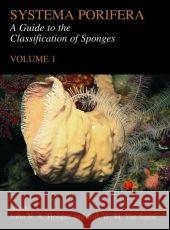Systema Porifera: A Guide to the Classification of Sponges » książka
Systema Porifera: A Guide to the Classification of Sponges
ISBN-13: 9780306472602 / Angielski / Twarda / 2004 / 1707 str.
Phylum porifera is an ecologically and economically important group of marine invertebrates, currently a major focus of marine natural product (pharmaceutical) research. Research whilst compiling this book has uncovered a fauna about twice the size as that previously published in the literature and consequently Systema Porifera revises and stabilizes the systematics of the phylum to accommodate this new knowledge in a contemporary framework. Practical tools (key illustrations, descriptions of character) are provided to facilitate the assignment of approximately 680 extant and 100 fossil genera. Systema Porifera is unique making sponge taxonomy widely available at the practical level of classification (genera, families, order). It is a taxonomic revision of sponges and spongiomorphis (such as sphinctozoans and archaeocyathans) based on re-evaluation of type materials and evidence. It is also a practical guide to sponge identification providing descriptions and illustrations of characters and interpretation of their importance to systematics. Systema Porifera addresses many long standing nomenclatural problems and provides a sound baseline for future debate on sponges and their place in time and space. Sponges are among the most highly diverse and successful of the aquatic invertebrate phyla, with about 7000 described species and at least twice this number extant worldwide. They are an ancient group, largely unchanged in their body plans since the late Cambrian. Once an important reef-building phylum they have radiated and diversified and are found in all aquatic habitats today. They are economically as well as ecologically important being primary targets for marine natural products and pharmaceutical research and consequently our knowledge of sponge biodiversity has increased substantially over recent decades. The Systema Porifera describes 3 classes, 7 subclasses, 24 orders, 127 families and 682 valid genera of extant sponges (with over 1600 nominal generic names and an additional 500 invalid names treated). Treatment of the fossil fauna is less comprehensive or critical, although 6 classes, 30 orders, 245 families and 998 fossil genera are mentioned. Keys to all recent and many fossil taxa are provided.











